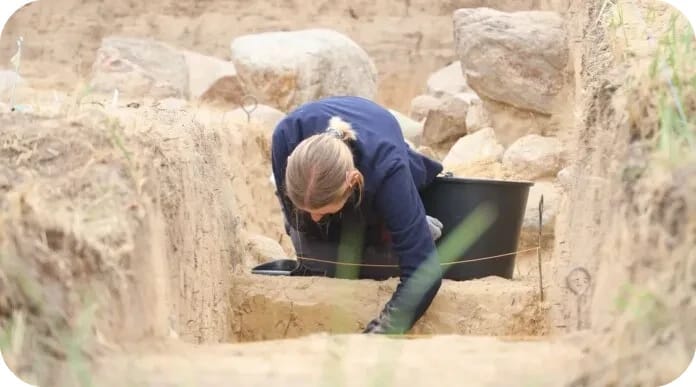- Daily Upsider
- Posts
- 🌞 DNA’s Chemical Shield
🌞 DNA’s Chemical Shield
Daily Upsider - Thursday, August 7th, 2025
Thursday, August 7th, 2025
Good Morning! 🌞
It’s Thankful Thursday, and today we’re giving gratitude in the form of tortillas, spice, and everything nice. That’s right—we’ve got a delicious feature on tacos waiting for you inside. Whether you’re a hard-shell hero or a soft tortilla soul, we’re diving into the tasty little wonders that always seem to make everything better.
So grab a napkin (or a margarita), and let’s taco 'bout it.
Today’s Upside
Health Sciences
DNA’s Chemical Shield

Freepik
A newly developed chemical probe may offer a way to protect healthy cells from DNA damage—addressing one of the eight core hallmarks of aging. The breakthrough centers on the mitochondria, which, despite being famously dubbed the “powerhouses” of the cell, play many roles beyond energy production. Mitochondria contain their own DNA (mtDNA), separate from the nuclear genome, and when that mtDNA becomes damaged, cells tend to degrade it rather than repair it. Over time, this loss can contribute to serious conditions such as heart disease, neurodegeneration, and chronic inflammation.

Infographic by Linlin Zhao, University of California Riverside
Now, researchers at UC Riverside have developed a chemical probe that can prevent that degradation. Published in Angewandte Chemie International Edition, the study explains how the molecule binds to damaged mtDNA and halts the enzymatic process that would normally destroy it. “There are already pathways in cells that attempt repair,” said Linlin Zhao, UCR associate professor of chemistry. “But degradation happens more frequently than repair due to the redundancy of mtDNA molecules in mitochondria. Our strategy is to stop the loss before it becomes a problem.” The probe combines two components: one that finds and binds to damaged mtDNA, and another that ensures it targets only mitochondria—leaving the nuclear genome untouched.

The Hallmarks of Aging – credit Rebelo-Marques et al, Frontiers, CC 4.0. BY-SA
Lab tests and live cell experiments showed that the probe helped preserve mtDNA levels even after exposure to toxic stress, like that caused by nitrosamines—pollutants found in processed foods, water, and tobacco smoke. Treated cells retained more mtDNA, supporting energy production in key organs such as the heart and brain. Loss of mtDNA has been linked to diseases like diabetes, Alzheimer’s, arthritis, and inflammatory bowel disease, partly because escaping mtDNA fragments can trigger inflammation. “If we can retain the DNA inside the mitochondria, we might be able to prevent those downstream signals that cause inflammation,” Zhao said. Remarkably, the chemically tagged mtDNA remained functional: “We thought adding a bulky chemical might prevent the DNA from working properly,” she said, “but to our surprise, it was still able to support transcription.” With more studies ahead, the discovery marks a shift from reactive repair to proactive protection. “This is a chemical approach to prevention, not just repair,” Zhao said. “It’s a new way of thinking about how to defend the genome under stress.”
History
Ancient Megalithic Tombs

Photo courtesy the Complex of Landscape Parks of the Wielkopolska Voivodeship.
Two ancient tombs have been discovered in Poland’s Dezydery Chłapowski Landscape Park, offering fresh insight into a distinct Neolithic society known for its monumental burial mounds. The find, made using remote sensing during routine fieldwork, is reminiscent of the famous "Polish Pyramids"—megalithic tombs attributed to the Funnel Breakers, a Neolithic culture known for constructing elongated triangular graves covered in earth. A well-known cluster of such tombs lies in Kuyavia, between Izbica and Wietrzychowice, with massive stone doorways weighing over three tons. Built around 4,000 BCE, they earned nicknames like “giants beds” and “Kuyawy mounds” and stretched an impressive 360 feet long.

One of the so-called Polish Pyramids at Wietrzychowice – credit, MOs810, CC BY-SA 4.0.
The newly identified tombs appear to be a slightly younger variant, possibly dating to 3,500 BCE. These mounds are trapezoidal in shape and stretch up to 656 feet in length—significantly longer than their predecessors. Funnel Breaker burial tradition typically involved placing a single individual in a seated position at the far end of a narrow corridor, surrounded by grave goods. Although no human remains were found in the recent discovery, archaeologists remain hopeful that upcoming excavations might yield artifacts—such as the distinctive ceramics or double-headed stone axes often associated with this ancient culture.
Led by Dr. Danuta Żurkiewicz and Dr. Iwona Sobkowiak-Tabaka of Adam Mickiewicz University, the excavation team noted a striking feature: both tombs face east, aligning with a broader pattern seen in megalithic architecture across Europe. However, unlike the Kuyavia examples, these tombs are missing their massive stone gate markers. According to a translated report from the Polish Press Agency, this is no mystery—"people have always needed stone throughout the ages," and it's likely that the gate stones were quarried away long ago to be reused for houses and enclosures.
World News
Michelin Star Taco

Freepik
In a delicious twist on the old adage "less is more," a tiny taco stand in Mexico City has done the unthinkable—earned a coveted Michelin Star. With only four items on the menu and seating for just 11 diners crammed shoulder-to-shoulder, Taquería El Califa de León in the Colonia San Rafael neighborhood rose above thousands of competitors to make culinary history. In the first-ever Michelin Guide to Mexico, Chef Arturo Rivera Martínez became the first taco stand owner to receive the prestigious honor, which denotes “high quality, worth a stop.”
“The secret is the simplicity of our taco,” Rivera Martínez told the Associated Press. “It has only a tortilla, red or green sauce, and that’s it. That, and the quality of the meat.” Much like a pizza lives or dies by its dough, the taco’s foundation—the tortilla—is where excellence begins. The Michelin Guide called it “excellent… elemental, and pure.” The taquería’s signature dish, the Gaonera taco, named after famed Mexican bullfighter Rodolfo Gaonera, features thinly sliced beef, seasoned simply with salt and lime. The sauces? According to Michelin, they’re “almost unnecessary” next to the punch of the taco's core ingredients.
Despite its humble, bare-bones setting, El Califa de León has earned a place in Mexico’s growing legacy of global culinary recognition. With its rich blend of traditional and immigrant cultures, regional diversity, and agricultural abundance, Mexico is a gastronomic powerhouse ready for the world stage. “What a joy it is to honor the uniqueness of the Mexican gastronomic landscape in Mexico City,” said Gwendal Poullennec, International Director of the Michelin Guides. “The first and very promising selection is an illustration of how the country is showcasing its regions, with their cultures and traditions that are as distinctive as they are distinguishable.”
Support Daily Upsider!
Help our mission to share positive, meaningful news! Your support keeps us going without the need to bombard you with annoying ads!

🌿 Thankful Thursday 🌿
Gratitude grounds us. This week, we’re pausing to thank the people and moments that quietly hold us up.
Who’s someone who made your week easier—without even realizing it? Maybe a friend who sent a quick “thinking of you” text. A co-worker who cracked a joke right when you needed it. Or the stranger who held the door when your hands were full.
👉 Take 30 seconds. Text them. Tell them thank you. (Yes, now.)
And if no one comes to mind, that’s okay too. Look around. Gratitude is a muscle—we build it by using it.
Reply to this email and let us know: What are you thankful for this Thursday? We’d love to share a few answers (anonymously!) next week.
Mind Stretchers
⁉️
My click-clack songs are old but grand,
I stamp out words by human hand.
No screen in sight, no glowing face—
Just ink, and rhythm, and metal grace.
Yesterday’s Answers to the Mind Stretchers:
I rise when things get hot,
But break if shaken on the spot.
Red or silver in a tube I lie—
Guess too high, and I say goodbye. — a thermometer! James Godfrey got this correct first 🌞
Be the first to send us the correct answer for today’s mind stretcher for a shout-out with the answer tomorrow. Just send us the answer and your name to[email protected]or reply to email.
From the Community
If you have any uplifting stories and experience you might want to share, send those over to [email protected] for the chance to be featured.
Reply